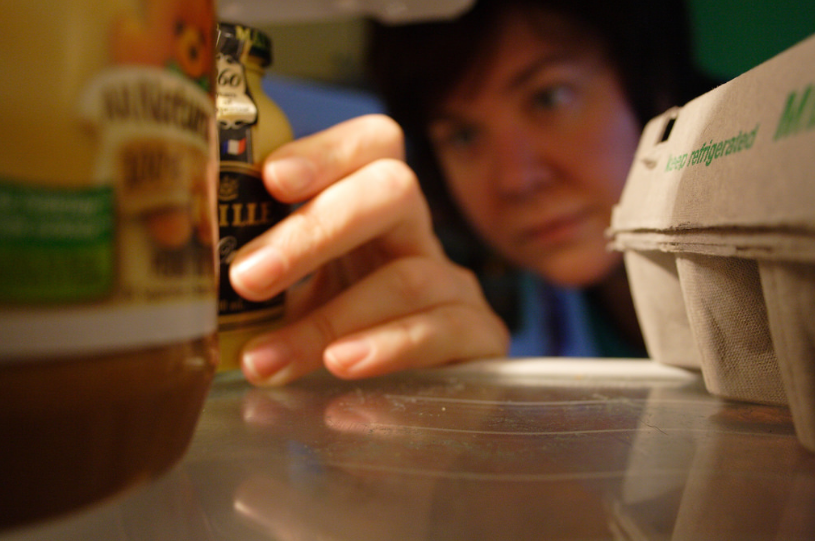
TORONTO – With vibrant fresh fruit and vegetables mounded high at farmers markets and grocery stores, it’s natural to want to stock up to make salsas, jams and pickles. But if you aren’t storing items correctly to maximize flavour and freshness – or buying too much and not using it up – you’re wasting it.
“We think we’re going to make all these things and then we get home and life kicks in and we’re just not able to follow through on our wonderful ideas, so we overbuy… and then we’re stuck with too many tomatoes on the counter that we end up having to move into the fridge – and then we lose the best flavour possible,”’ says Getty Stewart, a home economist in Winnipeg.
Many people are surprised to learn it’s best to store tomatoes at room temperature – ideally 20 C to 22 C – until they soften. Refrigerating causes a loss of flavour and a mealy texture.
Once ripe, “if you can’t eat them within the next day and they’ve become really, really soft, then it’s time to put them in the fridge… to save them from spoiling,” says Stewart. “But let them warm up to room temperature when you’re ready to eat them.”
When storing fresh fruit, herbs and vegetables, don’t wash them until just prior to use.
“Fruits and vegetables have their own natural ways of preserving the moisture inside of them,” says Stewart.
“If you scrub that off, not only are you removing any waxes that have been added by the producers, but you’re removing the natural preservatives around the fruit as well.”
Here are some tips on storing other seasonal produce for peak freshness:
Stone Fruits (peaches, nectarines, plums)
Store at room temperature for one to three days till ripe, then place in a plastic bag in the fridge for three to five days.
The plastic bag will reduce air circulation and prevent moisture and other flavours in the fridge from getting at the fruit.
Melons
These can be kept on the counter.
“But there’s that point again where they’re becoming way too soft versus sacrificing a little bit of that sweet flavour and putting it in the fridge,” says Stewart.
Raspberries
“Despite herculean efforts we can’t make raspberries last beyond two, maybe three days,” says Stewart.
Producers package raspberries in a single or double layer in clear plastic containers with air holes and a lining at the base. When buying berries from a farmers market or picking your own, mimic these ideal storage conditions by lining the bottom of a container with a towel and carefully setting in one or two layers, being careful not to squash them and providing enough space to discourage mould growth.
Corn
If you’re not eating corn right away, leave cobs in their husks and place in a plastic bag in the crisper. Watch that moisture doesn’t develop in the bag.
“It’s another produce item you should be eating as soon as you possibly can. Those corn kernels will turn from sweet to starchy as they sit and the longer they sit, the more sweetness you will lose,” says Stewart.
Greens
“The darker and the tougher the green, typically the longer it’s going to last. When you do get a lot of greens, for example, if you have a CSA (community supported agriculture) box and you’re getting a whole bunch of greens, start eating the lighter, more tender greens first because the kale, spinach, chard and beet greens are going to last longer,” says Stewart. “Even a romaine will last longer than a butter leaf.”
Refrigerate greens unwashed in a plastic bag. Wrap in a towel first to keep off surface moisture that can cause spoilage. To perk up leaves that are starting to wilt, soak them in ice-cold or salted water for about 10 minutes.
Herbs
Storage depends on the herb’s foliage.
Woody herbs like rosemary, thyme and sage are quite dry and you want to keep them that way.
“I typically wrap them in towels and keep them in a sealable container in the fridge, even a plastic bag, but the trick is to keep the moisture out,” says Stewart.
She stores cilantro and parsley like a bouquet of flowers. Set stem ends in a jar containing about 2.5 centimetres (one inch) of water – don’t allow leaves to be in the water – then refrigerate.
Basil, on the other hand, likes warmth so you can store it as a bouquet at room temperature.
Alternatively, roll herbs in a towel, place in a plastic bag and refrigerate for one to two weeks.
Going on vacation?
If you can’t eat all the produce you have on hand before you go away, do some prep to avoid wasting it.
Chop or slice and store peppers and onions in self-sealing plastic bags in the freezer.
Fruit can also be washed, chopped, placed in a bag and frozen.
Chop mushrooms finely (the size of ground beef) and freeze for use in casseroles. “They’re never going to work great as an addition to something where the appearance of the mushrooms is important because they will get quite soggy and the texture just won’t be there.”